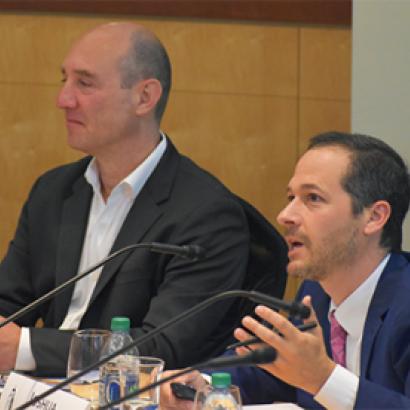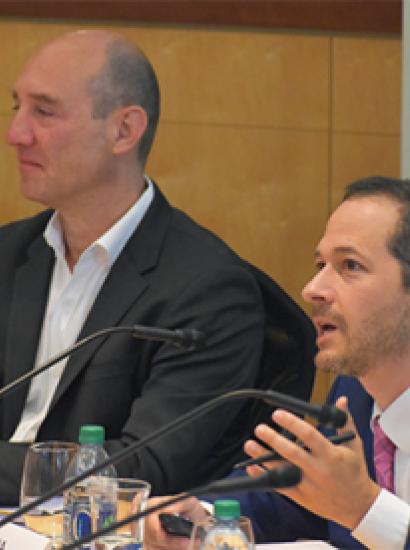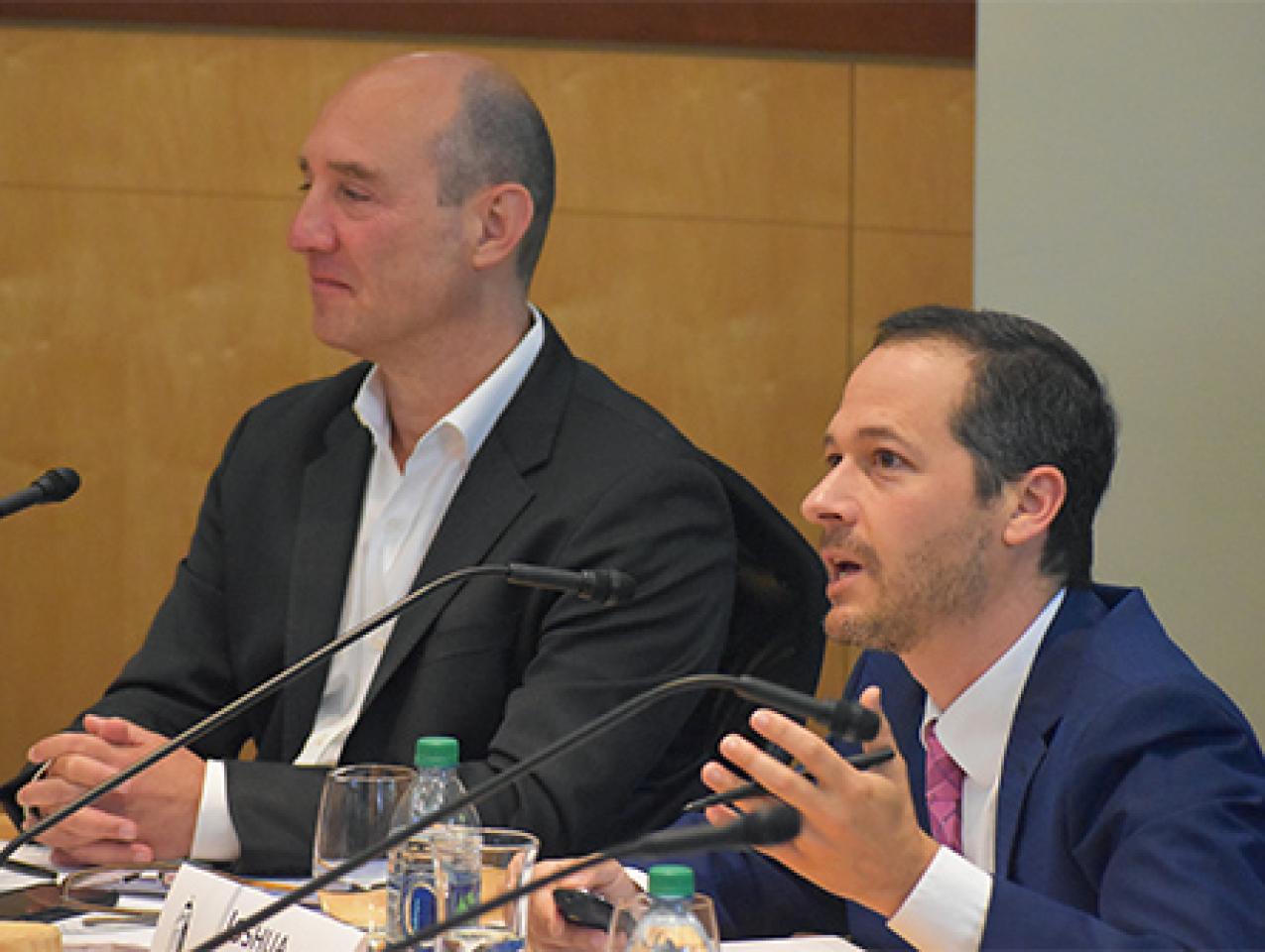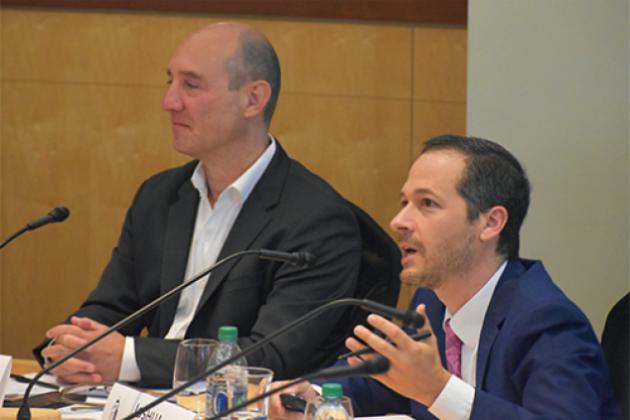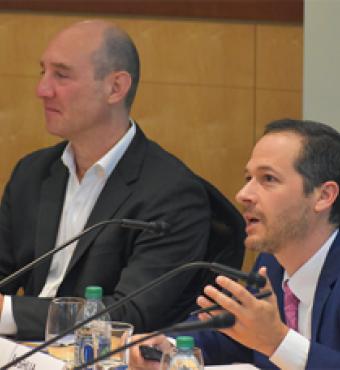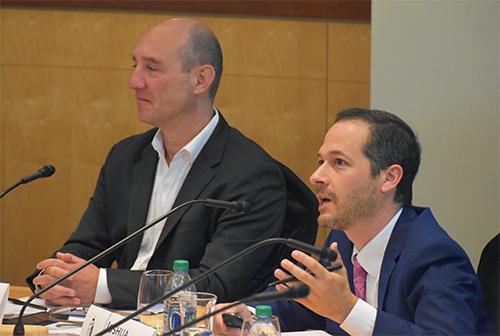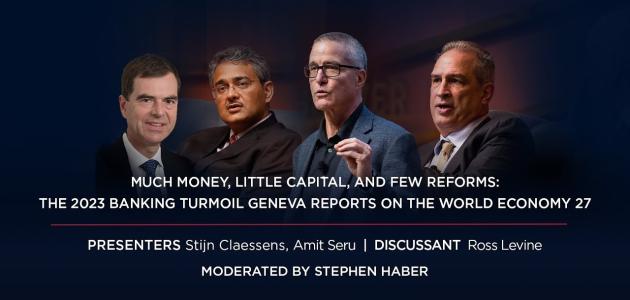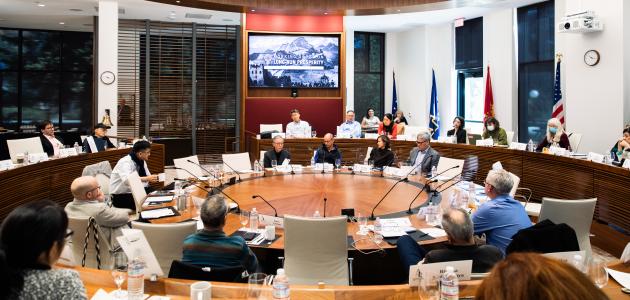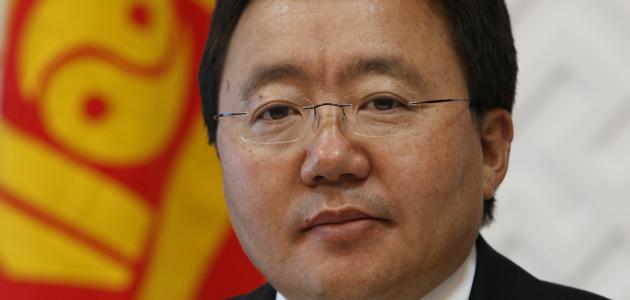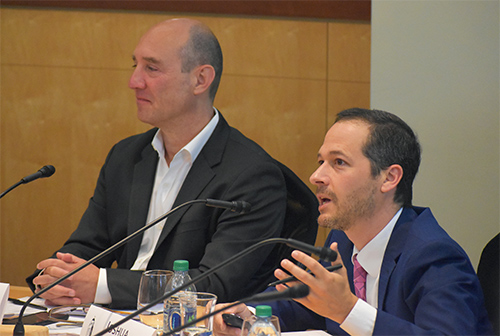
Everyone needs airports, roads and bridges, but how to invest in infrastructure and services with a decent rate of return is a challenge.
To better understand the role of private investment in helping to fund society’s basic systems and services, the Hoover Institution held the May 17 event, “The Finance of Infrastructure Symposium,” bringing together academic scholars, finance experts and policymakers.
Infrastructure is a timely topic. The Trump Administration recently engaged in preliminary talks on infrastructure with Congressional leaders.
Infrastructure is defined as bridges, road and railway networks, utilities, sewage, water, telephone lines and cell towers, and air control towers. Services such as law enforcement, emergency services, health care, and education are also considered infrastructure.
The organizers were economists Joshua Rauh, Senior Fellow and Director of Research at Hoover, and Roman Kräussl, a Hoover Visiting Fellow and Professor at the Luxembourg School of Finance. Rauh studies corporate investment, business taxation, government pension liabilities, and investment management. Kräussl’s research focuses on alternative investments, including private equity and infrastructure.
One theme concerned the infrastructure “gap” between planned and desired infrastructure. Participants discussed the obstacles that exist to the financing of infrastructure, as well as policy conclusions given these hurdles.
In his remarks, Rauh talked about his research paper, “The Subsidy to Infrastructure as an Asset Class,” which he co-authored with Kräussl and Aleksandar Andonov of the University of Amsterdam.
The researchers found that the cash flow patterns of returns provided by closed infrastructure funds are similar those provided by private equity buyout or real estate funds. Rauh and his co-authors concluded that closed infrastructure funds, typically structured with a finite life of around 10-12 years, generate most of their returns through capital gains and relatively quick exits. Infrastructure funds do not provide more stable cash flows to institutional investors than other private funds, even though many institutional investors justify the inclusion of the infrastructure asset class in their portfolio on the grounds that they expect infrastructure investments to deliver stable cash flows over a long horizon.
Other research papers, topics and speakers included:
- “Infrastructure as an Asset Class: An Overview,” Barbara Weber, B Capital Partners AG
- “Investing Outside the Box: Evidence from Alternative Vehicles in Private Capital,” Josh Lerner, Harvard Business School
- “Financing PPP Projects with PVR Contracts: Theory and Evidence from the UK and Chile,” Eduardo Engel, University of Chile
- “Do Public-Private Partnership Enabling Laws Increase Private Investment in Transportation Infrastructure,” Richard Geddes, Cornell University
- “Take the Q Train: Value Capture of Public Infrastructure Projects,” Arpit Gupta, New York University
Sir Danny Alexander of the Asia Infrastructure Investment Bank (AIIB) presented the policy keynote address, “The Role of International Financial Institutions in Supporting Infrastructure.” Edward Glaeser of Harvard University delivered the academic keynote talk, “Incentives, Infrastructure and Institutions: Building, Funding and Managing Public Works.”
A panel discussion on “The Finance of Infrastructure: Present and Future” included Isela Bahena, Nuveen/TIAA; Michael Bennon, Stanford Global Projects Center; John Graves, Washington State Investment Board; Adebayo Ogunlesi, Global Infrastructure Partners; and was moderated by Professor Roman Kräussl.
Throughout the day, participants talked about the disconnect between planned and desired infrastructure, and the challenges this poses for funding. Some industry experts urge an increase in institutional investor capital, including from public pension funds and other sources, to fund infrastructure. They say that infrastructure is a perfect investment for long-term capital, because it can offer long-term, low-risk, inflation-protected cyclical returns with high cash flows. But the reality, others said, is that infrastructure as an asset class for investors has not yet delivered on such promises.
A complete synopsis of the presentations and the event is available here.
MEDIA CONTACT:
Clifton B. Parker, The Hoover Institution: 650-498-5204, cbparker@stanford.edu







